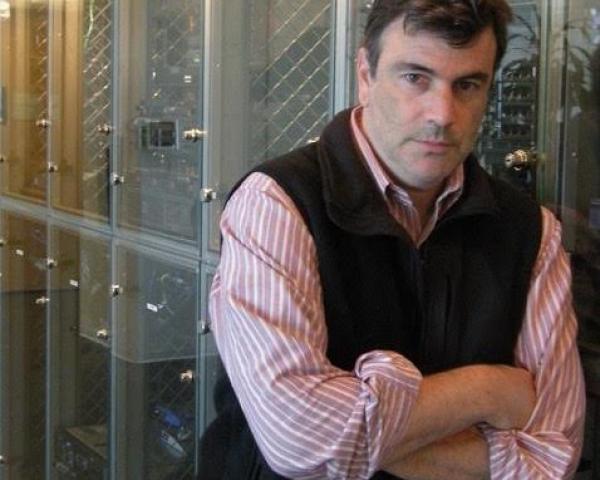More than a half century ago, Ted Levitt transformed the strategic marketing agenda by asking a seemingly simple question. In his classic Harvard Business Review article "Marketing Myopia," Levitt declared that truly effective executives needed the courage, creativity and self-discipline to answer, "What business are we really in?"
Were railroads, he asked, in the railroad business or the transportation business? Are oil companies in the oil business or hydrocarbon or energy business? The distinctions aren’t subtle, Levitt argued, and they subverted how companies saw their futures. Marketing myopia blinded firms to both disruptive threats and innovation opportunities.
Levitt’s provocative question remains both potent and perceptive for marketers today. But my research in human capital investment and "network effects" suggests that it, too, needs a little visionary help. Increasingly, successful market leaders and innovators – the Amazons, Apples, Googles, Facebooks, Netflixs and Ubers– also ask, "Who do we want our customers to become?"
That question is as mission-critical for insurance and financial services innovators as for Silicon Valley startups. The digitally disruptive influence of platforms, algorithms and analytics comes not just from how they transform internal enterprise economics but from their combined abilities to transform customers and clients, as well. Successful innovators transform their customers.
See also: The 7 Colors of Digital Innovation
The essential insight: Innovation isn’t just an investment in product enhancement or better customer experience; innovation is an investment in your customer’s future value. Simply put, innovation is an investment in the human capital, capabilities, competencies and creativity of one’s customers and clients.
This is as true for professional services and business-to-business industries as for consumer products and services companies.
History gives great credence to this “human capital” model of innovation. Henry Ford didn’t just facilitate “mass production,” he enabled the human capital of “driving.” George Eastman didn’t just create cheap cameras and films; Kodak created photographers. Sam Walton’s Walmart successfully deployed scale, satellite and supply chain superiority that transformed "typical" shoppers into higher-volume, one-stop, everyday-low-pricing customers.
Similarly, Steve Jobs didn’t merely “reinvent” personal computing and mobile telephony; he reinvented how people physically touched, stroked and talked to their devices. Google’s core technology breakthrough may appear to be “search,” but the success of the company’s algorithms and business model is contingent upon creating more than a billion smart “searchers” worldwide.
The essential economic takeaway is that sustainable innovation success doesn’t revolve simply around what innovations “do”; it builds on what they invite customers to become. Simply put, making customers better makes better customers.
Successful companies have a “vision of the customer future” that matters every bit as much as their products and services road maps.
Insurance, fintech and insurtech industries should be no different. The same digital innovation and transformation dynamics apply. That means financial services firms must go beyond the "faster, better, cheaper" innovation ethos to ask how their innovations will profitably transform customer behaviors, capabilities and expectations.
In other words, it’s not enough to answer Levitt’s question by declaring, "We’re in the auto/property/life insurance business." The challenge comes from determining how insurance companies want their new products, innovative services and novel user experiences to transform their customers. How can insurance companies invest in their customers in ways that make them more valuable? Who are they asking their customers to become?
So when insurers innovate in ways that give customers and prospects new capabilities -- like Progressive’s price-comparison tools and Snapshot vehicle-usage plug-ins or Allstate’s mobile-phone-enabled QuickFoto claims submission option -- they’re not just solving problems but asking customers to engage in ways they never had before.
Who are these companies asking their customers to become? People who will comparison shop; allow themselves to be monitored in exchange for better prices and better service; collaboratively gather digital data to review and expedite claims. These are but the first generation of innovation investments that suggest tomorrow’s customers will do much more.
This is of a piece with how a Jeff Bezos, Steve Jobs, Mark Zuckerberg or Reed Hastings innovates to make their customers -- not just their products -- more valuable.
Today’s Web 2.0 "network effects" business model — where a service becomes more valuable the more people use it — are superb examples of how smart companies recognize that their own futures depend on how ingeniously they invest in the future capabilities of their customers. Their continuous innovation is contingent on their customers’ continuous improvement. Call it “customer
kaizen.”
How rigorously and ruthlessly fintech, insurtech and insurance companies champion this innovation ethos will prove crucial to their success. Being in "the blockchain business" is radically and fundamentally different than asking who we want our blockchain users to become.
See also: ‘Digital’ Needs a Personal Touch
Giving better, faster and cheaper advice on risk management via digital devices is different than fundamentally transforming how customers perceive and manage risk. It’s the difference between “transactional innovation” and innovation based on more sustainable relationships of mutual gain.
The insurance industry needs to transform its innovation mindset. Start thinking how innovations make customers and clients more valuable. If your innovations aren’t explicit, measurable investments in your customers’ futures, then you are taking a myopic view of your own.
Today’s strategic marketing and innovation challenge is how best to align "What business are we in?" with "Who do we want our customers to become?"


